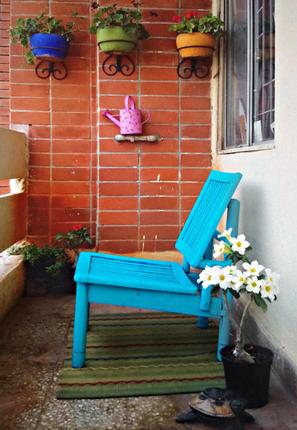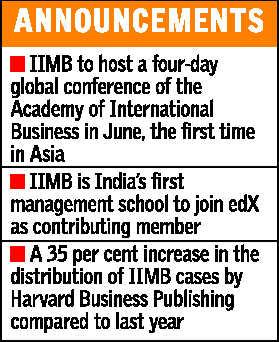Writing on the wall
No. of libraries* in state:7,239
Total books:163.42 lakh
Staff: 1,481
Members83.28 lakh (41.10 lakh male; 42.18 lakh female)
Source: Department of Public Libraries |
*Including district central libraries, city central libraries, branches, community libraries, children’s libraries (district), hospital libraries, gram panchayat, mobile and slum libraries
Libraries lie quiet, not quite out yet
Chethan.Kumar@timesgroup.com
Bengaluru:
Sheela Balasubramaniam, 48, is responsible for the cleanliness of East Bengaluru City Central Library. However, calling her mere housekeeping staff is an understatement. For, she also makes entries in the register and brings in new members.
She would have been rewarded for multi-tasking if she had been in the corporate sector. But working in a government library, she is struggling to make ends meet. “I’ve not been paid for four months now. When I joined this library 18 years ago, my salary was Rs 550, now it is Rs 5,000, yet I do not know if I am a permanent employee,” she told TOI. Her colleagues too face the similar predicament even as members complain that it’s been more than a month since they saw newspapers in the library. Far away, Readerslib library in Bellandur, a private facility, has remained shut for three years, while ThinkBox, a children’s library in Vignan Nagar, has seen a decline in the annual membership. Bhakti Shah, 45, who runs ThinkBox, however, says that her library will continue. That libraries are plagued by problems — caused by decline in the serious ‘reading habit’ and advent of ebooks — is apparent if one visits a few of the about 255 libraries in Bengaluru, 199 of which are run by the government. However, libraries are still here to stay, say old patrons and those running successful libraries. For instance, Just Books, which has 30 branches in Bengaluru, has opened branches in Mangaluru and Mysuru. The British Council Library is still a hit while the Central Library in Cubbon Park continues to get new members. The absolute number of members is increasing, giving libraries an extended lease of life. Gautham Kumar, 71, an old patron says, “I agree there are a lot of innovations. Even I use some of them, but the use for a library is not going anywhere anytime soon… There is no substitution to the library.” When asked about the situation, Satish Kumar Hosamani, director of the public libraries department, said, “The number of books is increasing because we have members. I don’t disagree that there are problems, but no ebook reader can replace the library, at least not yet.”
Demand rises in Royal City Mysuru:
Increasing popularity of e-books and the comfort of the internet notwithstanding, demand for libraries is growing in Mysuru. However, library authorities are unable to set up more branches due to dearth of funds. Mysuru has 18 libraries and 14 service centres run by the City Central Library. It is visited by nearly 800 people, including 300 students, every day. The city also has a community children centre at J P Nagar, which has comics, story books and games. Besides, public are demanding for libraries in Hebbal and B M Sri Nagar. If libraries are facing any problem, it’s only of lack of space and funds. Some were shifted to alternative places due to insufficient space and lack of facilities. B Manjunath, deputy director of the department of public libraries, said: “We have great demand for new libraries. We want to develop libraries at all the 65 wards in the city. But dearth of funds is a major problem.”
Big fount of Kannada literature in M’luru
Stanly.Pinto@timesgroup.com
Mangaluru:
In the mid-80s, one had to jostle with the milling crowd at private libraries and stand in queues to borrow books. That’s a thing of the past in Mangaluru. Take the case of Standard Library established in 1982 by Victor Alvares. It has 1,200 members but only 10% of them are regular — most of them in their mid-40s. Alvares notes that most parents refuse to pass on their reading habit to their wards. “Summer camps or refresher course or tuitions that children attend eat up all their time,” notes Sarah, a reader. Now, hardly five private libraries remain in the city – one each at Balmatta, Light House, Hill Road, Lalbagh and Bejai. “We are surviving because of old readers. Present generation has lost interest in reading,” says Jerald Fernandes, owner of Readers Delight, which used to be filled with students in the 80s. On the contrary, the government-run Central Library, which has 19 branches, has seen an increase in membership as it largely caters to Kannada literature enthusiasts apart from newspaper reading public. They are visited by students as competitive books are also available.
Going is still good in twin cities
Sangamesh.Menasinakai@timesgroup.com
Hubballi:
Libraries in Hubballi-Dharward are here to stay even as some private facilities are facing the heat of digital innovations. This can be gauged from the fact that the government has opened seven new libraries here in the last 14 years and upgraded the others. The public libraries department runs 24 branch libraries in Hubballi-Dharwad, besides 18 service libraries at the premises of various departments and employees unions. “The libraries have been getting more readers after their upgradation with digitization of books and computerization of all information,” says M B Karigar, deputy director at head office of library department. However, two private libraries are in a state of chaos. Saraswati Vidyaranya Vachanalaya, opened in 1925, has reduced its working hours to 2 hours, while the Nagarkar Library, opened in 1897, has been closed for 2 months due to various reasons. Neelesh Ganiger, a patron of the central library, said students like going to government libraries because of the facilities there instead of private ones.
source: http://www.timesofindia.indiatimes.com / The Times of India / Home> City> Bengaluru / TNN / March 30th, 2015









